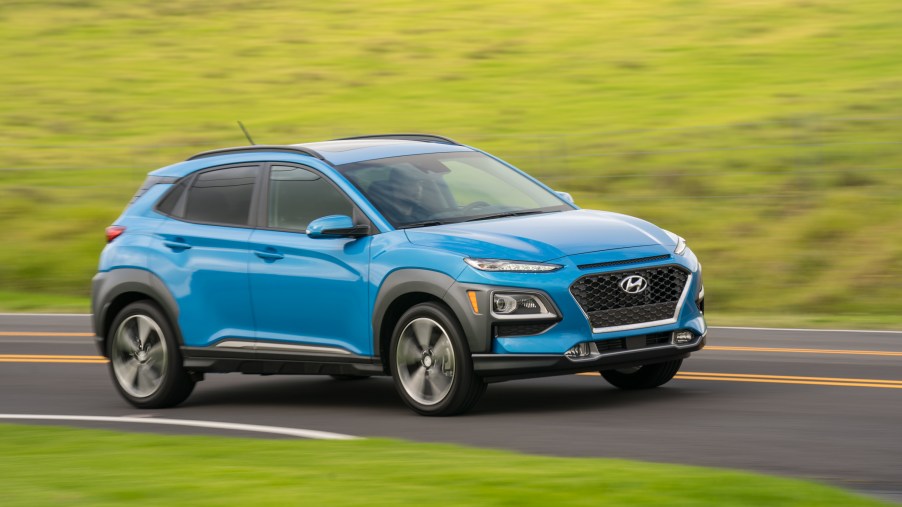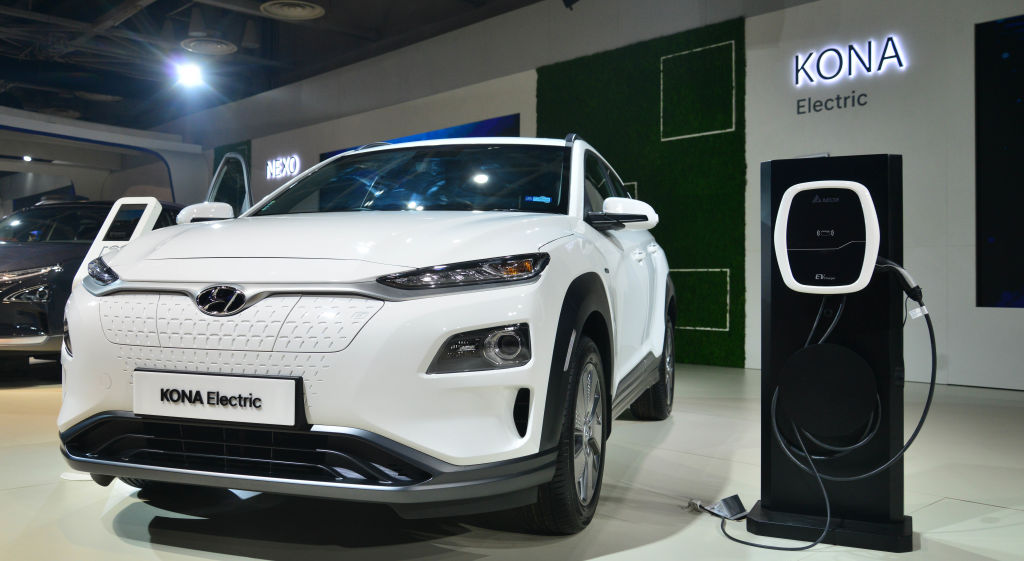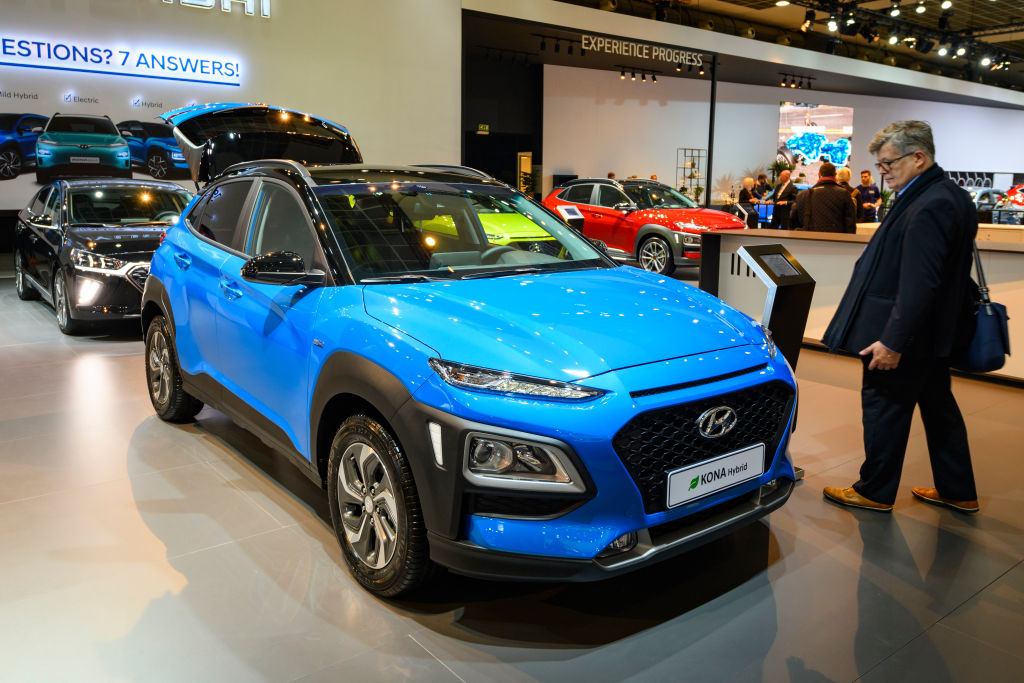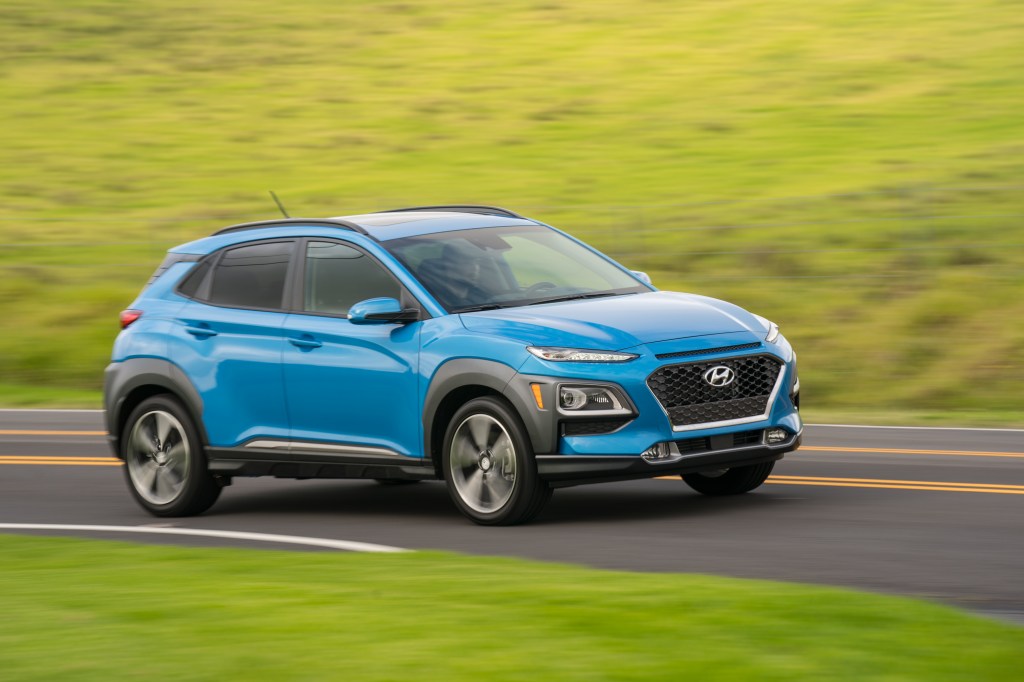
Is The Hyundai Kona Electric A Good SUV?
Every vehicle is getting electrified these days. We can expect a new electric Ford F-150, all Jeep models will have hybrid options by 2022, the Honda E is coming to America, and much more. So, let’s take a look at one of the current options available, the Hyundai Kona Electric, to see how it compares.
How Does The Hyundai Kona Electric Compare?
The Hyundai Kona Electric starts around $37k. This price seemed pretty steep compared to the non-electric Kona that starts around $20k. However, this price stacks up fairly against the competition.

Hyundai Kona Electric
For example, the Chevy Bolt SE starts around $37k. Other cheaper options, like the Kia Soul EV, don’t have the range and power to compare.
Hyundai Kona Electric Power
The Kona Electric has an electric motor to produces an impressive 201 horsepower and 291 lb-ft of torque, making it one of the more powerful electronic options. The 64 kWh battery is also conveniently placed under the front passenger seat.
However, all of this extra power doesn’t improve its acceleration. The Kona Electric takes 7.6 seconds to go from 0 to 60 mph.
This is slightly faster than other compact SUV models that take around 10 seconds to get to 60 mph, but behind the Mustang Mach E, which can go from 0 to 60 in a mere 3 seconds. Also, drivers are reporting that the Kona goes from 0 to 40 pretty quickly before tapering off.
On a positive note, along with being slightly faster than other competitors, the Kona EV also has a better range. It can go up to 256 miles on a single charge. The Nissan Leaf can only has a 226-mile range.
But, the Kona Electric can take a little longer to charge. With a 220/240 volt outlet at home, the Kona takes 9 hours and 35 minutes to charge completely. But it does charge up to 80% in only 50 minutes with DC fast chargers.
Hyundai Kona Electric Features
The Kona EV is being praised for its regenerative breaking that quickly stops this SUV in stop and go traffic. There is no need for paddles, like other electric vehicles, require to stop efficiently.

The Hyundai Kona Electric
Also, the Kona EV feels incredibly spacious on the inside. Tall people have plenty of space in this five-passenger SUV.
But despite its seating room, there isn’t much cargo space. There is only 19.2 cubic feet of cargo space behind the rear seat and 45.3 cubic feet of cargo space when the back seat is folded down.
The interior also doesn’t have a luxurious feel. It has a minimal design with a 7” color touch screen display. This is a smaller infotainment center compared to other models and certainly lacks the futuristic feel that the Honda e provides.

Hyundai Kona
The Kona can connect to Apple Car Play and Android Auto, but that’s about it’s coolest tach feature aside from standard safety features, such as forward collision prevention and blind-spot monitoring.
We feel like the extra price included with the Kona provides more range and power, while the interior is lacking. With the lack of interior tech, we would like to see a decrease in price.



